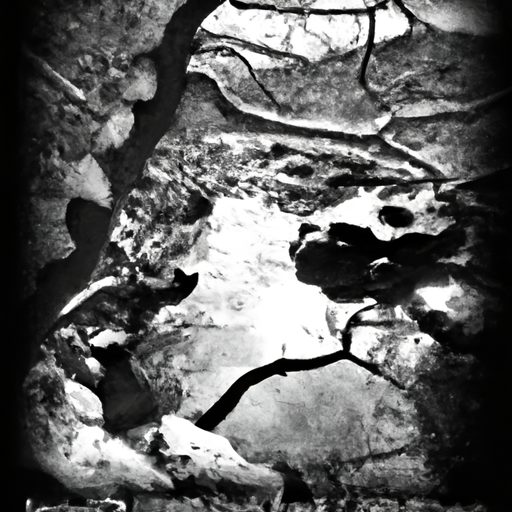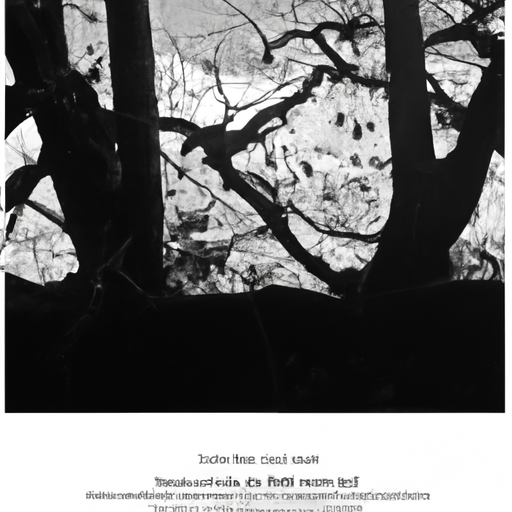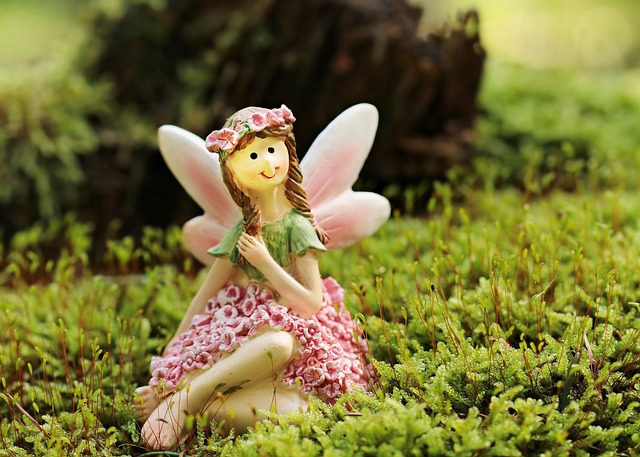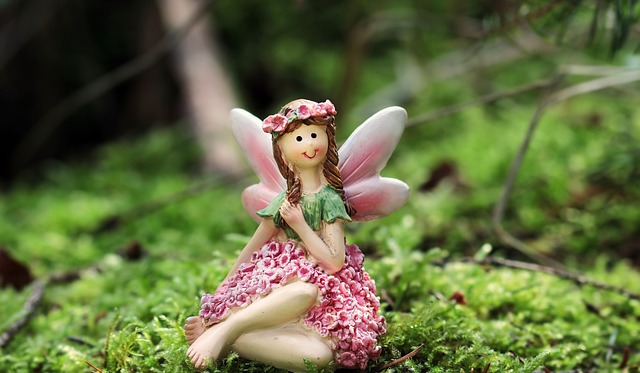The Origins of Norse Fairy Folklore
Introduction to Norse Mythology
Norse mythology is a rich and captivating world filled with gods, goddesses, giants, and fantastical creatures. Among these beings, fairies, also known as “huldufólk,” hold a significant place. The Norse people believed in these mysterious and elusive entities, attributing them with astonishing powers and abilities.
The Role of Fairies in Norse Mythology
In Norse mythology, fairies were not your typical winged creatures sprinkling magic dust. Instead, they were seen as powerful and enigmatic beings who dwelled in hidden realms, interacting with humans only when they chose to do so. These diminutive figures were believed to possess immense wisdom, often serving as guides or messengers between the human and divine worlds.
Fairy Characteristics in Norse Folklore
Norse fairy folklore describes fairies as ethereal and secretive beings, capable of shape-shifting and disappearing at will. They were known for their beauty, but also for their mischievous and sometimes malicious nature. Fairies were said to have the ability to bring fortune or cause misfortune, depending on their mood. They were closely associated with natural elements such as rivers, forests, and mountains, and were believed to protect and guard these sacred places.
From enchanting tales to cautionary warnings, the allure of Norse fairy folklore continues to captivate our imaginations. Exploring the origins and characteristics of these mystical beings allows us to delve into a realm where magic and wonder intertwine.
Types of Norse Fairies
Unraveling the mysteries of Norse fairy folklore has been a fascinating journey for me. Fairy folklore is an intriguing subject that has captivated the imaginations of many, and today I want to delve into the different types of Norse fairies. These magical beings have left a lasting impression on Norse mythology and continue to enchant us with their stories.
Elves: Nature Spirits of the Forest
Elves, often associated with nature, are believed to reside in the depths of the forest. They are known for their enchanting beauty and exceptional archery skills. Legends speak of their ability to bring good fortune to those they favor. Elves are protectors of the forest, and their connection with nature gives them the power to heal and communicate with animals.
Dwarves: Master Craftsmen and Guardians of Treasures
Dwarves, renowned for their exceptional craftsmanship, are said to live underground. These skilled artisans not only possess incredible talents in metalwork and crafting, but they also guard precious treasures hidden beneath the earth. Dwarves are known for their strong will and resilience, and tales often mention their allegiance to the gods.
Nymphs: Enchanting Water Spirits
Nymphs are enchanting water spirits that inhabit rivers, streams, and lakes. They are renowned for their mesmerizing beauty and captivating melodies. Legends tell of their gift to bestow inspiration and poetry upon those they favor. Nymphs are deeply connected to nature and possess healing powers, able to cure and rejuvenate.
Trolls: Mysterious Creatures of Norse Mythology
Trolls hold a mystifying presence in Norse mythology. These giants are known for their towering size and rocky features. Trolls are both feared and respected due to their immense strength and their connection with the supernatural. Some tales depict trolls as guardians of ancient knowledge, while others portray them as menacing creatures lurking in the dark.
Exploring the various types of Norse fairies gives us a glimpse into the rich and enchanting world of Norse mythology. These fairies, whether benevolent or mischievous, continue to captivate our imagination and remind us of the magic that lies within the realms of folklore.

Interactions between Humans and Norse Fairies
Human Perception of Fairies in Norse Society
In Norse folklore, fairies occupy a fascinating place in the beliefs and perceptions of humans. These otherworldly creatures, known as elves and álfar, are often described as exquisite beings with enchanting beauty. However, the perception of fairies in Norse society is multifaceted and differs greatly from the whimsical and benevolent depictions portrayed in popular culture.
Fairies’ Interaction with Humans
Norse fairy folklore suggests that fairies were known to interact with humans on various occasions. These interactions were not always harmonious, as fairies were believed to be mischievous and unpredictable. Tales of encounters with fairies often describe them as tricksters who played pranks on unsuspecting humans. While some interactions were lighthearted and harmless, others took a darker turn, resulting in dire consequences for those involved.
Dealings with Fairies: Blessings or Curses
Engaging with fairies was seen as a delicate affair, with potential blessings or curses hinging on human actions. It was believed that fairies possessed the power to bestow fortune, prosperity, and artistic inspiration upon humans. However, crossing these ethereal beings could result in misfortune, illness, or even abductions. Precautions, such as leaving offerings and using respectful language, were taken to maintain favorable relations with fairies.
Intriguing and enigmatic, the interactions between humans and Norse fairies unveil a captivating tapestry of beliefs woven deep within the fabric of Norse mythology and folklore. Exploring these intricacies provides a glimpse into the complex relationship between humans and these mystical beings.
Fairy Realms and Their Importance
Norse Cosmology and the Fairy Realms
When delving into the enchanting world of Norse Fairy Folklore, understanding the significance of the fairy realms is essential. Norse cosmology, characterized by a rich tapestry of mythological realms, provides a framework for comprehending the intricate web of fairy existence.
Asgard and the Realm of the Elves
In Norse mythology, Asgard is the divine land inhabited by the powerful gods. However, it also encapsulates the ethereal abode of the light elves, captivating creatures closely connected to nature. These ethereal beings, known for their captivating beauty and mischievous nature, possess magical powers that both intrigue and bewilder.
Svartalfheim: The Dwarves’ Underground Domain
Beneath the earth lies Svartalfheim, the subterranean realm of the dwarves. These skilled craftsmen, renowned for their exceptional talent in metallurgy, reside within magnificent underground halls. Legends speak of their ability to forge extraordinary weapons and objects possessing mystical properties.
Underwater Kingdoms of the Nymphs
Delving into the depths of lakes, rivers, and seas, a hidden world awaits discovery. The underwater kingdoms of the nymphs and water spirits bring forth a sense of wonder and awe. These mesmerizing beings, revered for their connection to water and their ability to shape-shift, harbor a potent influence on aquatic realms.
By unraveling the mysteries of these fairy realms, we gain insight into the symbiotic relationship between nature and the supernatural. The fairy realms of Norse mythology enrich our understanding of ancient folklore, providing a captivating glimpse into the magical tapestry of Norse fairy traditions.

Powers and Abilities of Norse Fairies
Throughout Norse folklore, fairies possess a myriad of powers and abilities that continue to captivate and intrigue us to this day. These ethereal beings are known for their enchanting and magical nature, and their abilities range from shape-shifting to healing remedies. Allow me to unravel some of the mysteries surrounding the powers of these whimsical creatures.
Shape-shifting: Fairies’ Ability to Assume Different Forms
One of the most fascinating attributes of Norse fairies is their ability to shape-shift. This transformative power allows them to take on various guises, from animals to humans and even inanimate objects. It is said that fairies often assume these different forms in order to interact with mortals, both assisting and sometimes deceiving them along their path.
Illusions and Glamour: Fairy Magic and Deception
Fairies are masters of illusion and glamour, harnessing their magical prowess to deceive and enchant. They can create illusions that trick the mind and senses, playing with perception and altering reality to suit their whims. Their glamour can be used to charm and captivate, sometimes leading mortals astray and trapping them in their magical realm.
Healing and Herblore: Fairies’ Knowledge of Remedies
Fairies possess a deep understanding of healing and herblore, with a wisdom passed down through generations. These mystical creatures have an innate connection to nature and the power to harness its remedies. They are known to aid humans in times of illness or injury, sharing their knowledge of medicinal herbs and techniques that can restore health and vitality.
Fairy Music: Enchanting Melodies of the Fae
Music holds a significant place in the realm of fairies, as they possess an otherworldly talent for creating melodies that mesmerize and enchant. The ethereal sounds they produce can evoke various emotions and alter the mood of those who listen. Legends speak of the hypnotic nature of fairy music, causing mortals to lose track of time or fall into a deep slumber while under its spell.
In unraveling the powers and abilities of Norse fairies, we begin to delve into a realm of magic and wonder. These captivating creatures continue to leave us spellbound, igniting our curiosity and sparking our imaginations. Whether real or merely folklore, the allure of fairy magic resonates deep within our souls. So, immerse yourself in the enchanting world of Norse fairy folklore, and let your imagination soar alongside these mystical beings.

Fairy Tales and Folklore of the Norse
Unraveling the mysteries of Norse fairy folklore is a fascinating journey that allows us to delve into the enchanting world of fairies, their existence, and the extraordinary powers they possess. Norse fairy tales are deeply rooted in the culture and mythology of the ancient Norse people. They offer valuable moral lessons and incredible insights into Norse society.
Popular Norse Fairy Tales
Within the rich tapestry of Norse folklore, numerous captivating fairy tales have gained popularity throughout the ages. Tales such as “The Twelve Dancing Princesses” and “East of the Sun and West of the Moon” transport us to realms where fairies interact with humans, demonstrating their mischievous nature and granting magical gifts.
Moral Lessons and Cultural Significance in Fairy Tales
Norse fairy tales not only entertain but also serve as vessels for transmitting cultural values and important life lessons. These stories teach us about bravery, loyalty, and the consequences of greed. By delving into Norse fairy tales, we gain a deeper understanding of the moral fabric that shaped ancient Norse society.
The Role of Fairies in Norse Stories
Fairies play a pivotal role in Norse stories, often serving as powerful allies or formidable adversaries. These supernatural beings possess incredible abilities, from shapeshifting to time manipulation. They are woven intricately into the fabric of Norse narratives, adding an element of enchantment and mystery to the tales.
In exploring the myths and legends surrounding Norse fairy folklore, we unlock the secrets of a captivating realm that sparks the imagination and ignites our curiosity about these mystical entities that have captured the hearts and minds of generations.

Fairy Sightings and Beliefs in Modern Times
Contemporary Accounts of Fairy Sightings
Throughout history, tales of encounters with fairies have captivated the imaginations of people worldwide. Even in modern times, there are countless accounts of individuals who claim to have glimpsed these elusive creatures. Reports range from seeing ethereal light beings dancing in the moonlight to encountering small, mischievous creatures in the depths of forests. These sightings, though often dismissed as mere folklore, continue to intrigue believers and skeptics alike.
Modern Interpretations of Norse Fairy Folklore
In recent years, there has been a resurgence of interest in Norse fairy folklore, particularly within the realms of popular culture and literature. Authors and artists draw inspiration from ancient texts, reimagining these mythical beings in captivating ways. With their enchanting beauty and mysterious powers, Norse fairies have become iconic figures in fantasy worlds.
Continued Belief in the Existence of Fairies
Despite scientific advancements and a more rational way of thinking, the belief in fairies persists. Many individuals, across different cultures, still hold fast to the notion that these magical beings inhabit our world. Whether it is the comfort they find in the possibility of a hidden realm or the influence of centuries of tradition, the belief in fairies endures.
From ancient folklore to modern interpretations, the mysteries of Norse fairy folklore continue to captivate our collective imagination. Fairy sightings today may be rare, but the belief in their existence remains strong. Whether we choose to believe or not, the enchantment of these mythical creatures will forever leave us pondering the magic that lies within our world.
The Influence of Norse Fairies in Popular Culture
Fairies in Literature and Art
As a lover of Norse fairy folklore, I am always fascinated by the impact these magical beings have had on popular culture. In literature, fairies from Norse mythology have inspired countless tales filled with enchantment and wonder. From J.R.R. Tolkien’s depiction of the fair Elven folk in “The Lord of the Rings” to Neil Gaiman’s modern take on Norse gods and fairies in “American Gods,” these mythical creatures continue to captivate our imagination.
Fairies in Music and Entertainment
Norse fairies have not only influenced the world of literature but have also made their way into the realm of music and entertainment. Numerous songs and musical compositions have drawn inspiration from the enchanting world of these otherworldly beings. For instance, the folk band Wardruna creates ethereal melodies that transport listeners to the magical forests inhabited by Norse fairies.
Fashion and Design Inspired by Norse Fairy Folklore
The allure of Norse fairies has permeated the fashion and design industry as well. From delicate, fairy-like dresses adorned with intricate embroidery to jewelry inspired by the enchanting beauty of these mythical creatures, their aesthetic has become a source of inspiration for many designers. The ethereal and whimsical qualities of Norse fairies have also been incorporated into home decor, fashion accessories, and even body art.
Norse fairies have left an indelible mark on popular culture. Their influence can be seen in various mediums, ranging from literature and music to fashion and design. These mystical beings continue to captivate our imagination and inspire a sense of enchantment in our modern lives.

The Cultural Legacy of Norse Fairy Folklore
Norse fairy folklore is a captivating subject that unveils a rich tapestry of mythical beings and enchanting tales. Throughout history, fairies have played an integral role in Scandinavian festivals and celebrations, adding an ethereal touch to these cultural events. These mischievous yet benevolent creatures often graced the festivities with their magical presence, leaving a lasting impression on the revelers.
Fairies in Scandinavian Festivals and Celebrations
In countless festivals across Scandinavia, fairies have been celebrated as cherished companions in the realm of tradition and folklore. Their mystical powers were believed to bring good fortune and ensure the success of harvests, while their mischievous nature added an element of surprise and wonder to the festivities. From Midsummer celebrations to Yule gatherings, fairies would often make their presence known through intricate dances, ethereal music, and captivating displays of magic.
Fairy Folklore in Modern Norse Identity
Even in modern times, Norse fairy folklore continues to shape the cultural identity of the Nordic people. These mythical beings have been embraced in various aspects of contemporary art, literature, and entertainment, adding a touch of enchantment to the lives of many. Nordic societies cherish their rich folklore as an integral part of their heritage, keeping the spirit of fairies alive through ongoing traditions and celebrations.
Preserving and Rediscovering Norse Fairy Tales
The preservation and rediscovery of Norse fairy tales have become a crucial endeavor to ensure that these captivating stories and their magical characters are not forgotten. Through careful research, dedicated individuals have uncovered hidden gems of folklore passed down through generations, shedding light on the mesmerizing world of Norse fairies. These rediscovered tales allow us to delve deeper into the mysterious realm of fairies and appreciate their enduring presence in Norse mythology.
As we explore the wonders of Norse fairy folklore, we embark on a journey that unravels the secrets behind these mythical beings. From their enchanting role in Scandinavian festivals to their ongoing influence on modern Norse identity, the legacy of fairies continues to captivate and inspire. Through the preservation and rediscovery of Norse fairy tales, we uncover a treasure trove of magical stories waiting to be discovered and cherished. So, let us embark on this adventure and immerse ourselves in the mysteries of Norse fairy folklore.
Conclusion
Throughout this exploration of Norse fairy folklore, I have uncovered a wealth of knowledge and insights into the captivating world of these mythical beings. The depths of Norse fairy folklore are astounding, with a wide range of tales, beliefs, and traditions that have been passed down through generations. From mischievous sprites to powerful enchantresses, the Norse fairy realm is a tapestry of wonders waiting to be unraveled.
Understanding the Depths of Norse Fairy Folklore
Delving into the depths of Norse fairy folklore, I have discovered that fairies hold a significant place in Norse mythology. These ethereal beings are described as having otherworldly beauty and possessing powerful magic. They are often associated with nature and can wield incredible powers over the elements. From granting wishes to meddling in human affairs, fairies are known to be both benevolent and malevolent creatures, depending on the circumstances.
Appreciating the Richness of Norse Mythology and Fairy Traditions
Exploring the richness of Norse mythology and fairy traditions, it is evident that fairies play a crucial role in the Norse cosmology. They are intertwined with gods, goddesses, and legendary creatures, shaping the narrative of this ancient culture. Norse fairy folklore offers a glimpse into the beliefs, values, and fears of the Norse people, providing a fascinating insight into their worldview.
In conclusion, by unravelling the mysteries of Norse fairy folklore, I have gained a newfound appreciation for these enchanting beings and the significance they hold within Norse mythology. Whether they exist in reality or simply reside in the realm of imagination, the allure of fairies continues to captivate our curiosity and imagination.